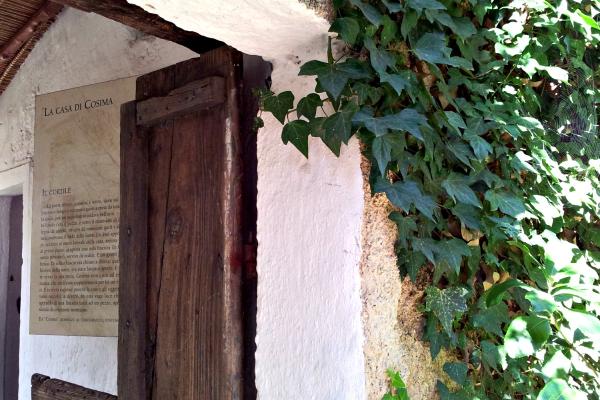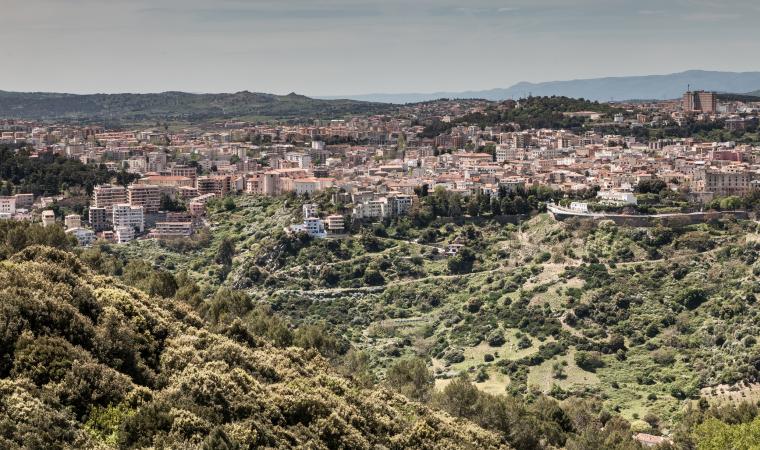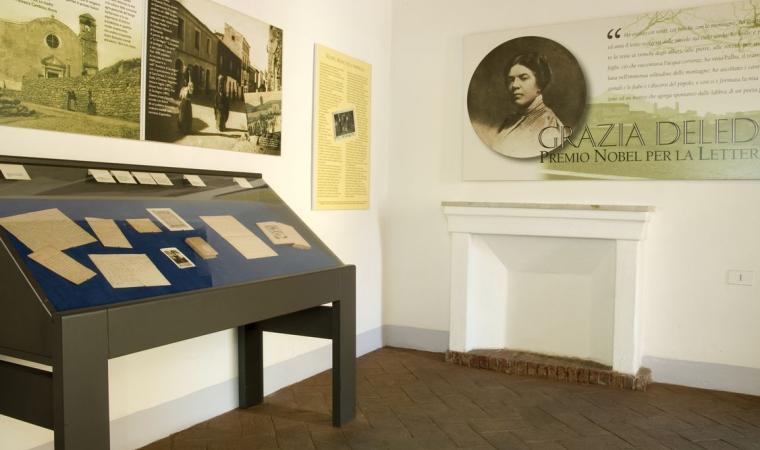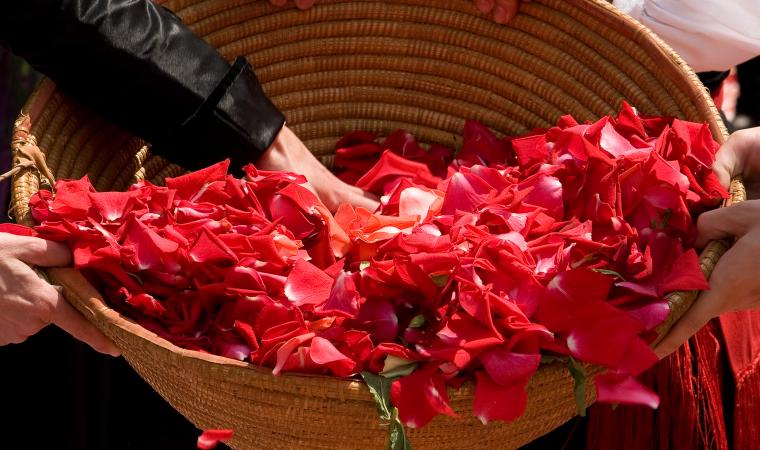
A pleasant leisurely stroll through Nuoro to the settings of Grazia Deledda’s novels, through the historic districts of Santu Pedru and Seuna, stopping in at the little church of Solitudine at the feet of Mt. Ortobene to pay homage at the author’s grave. From her house, described in Cosima and now a museum, to the charming Seuna district, an area that is home to the Sanctuary of Nostra Signora delle Grazie, the XVIII church of the Madonna delle Grazie and the monastery of the Order of the Friars Minor, a place the author wrote about.
Nuoro: Santu Pedru Quarter, Monte Ortobene, Séuna Quarter
Journey length: 2.5 km
Driving time: 29 min
The Santu Pedru Quarter
The itinerary begins in the santu Predu quarter at the house where the author Grazia Deledda was born, a house that was rebuilt based on the descriptions she provided in her novel Cosima, and which has been a museum since 1983. Inside you’ll find the furniture and objects the author used in her daily life, as well as first editions of some of her books. The district and a view of Mt. Ortobene can be seen from the courtyard. Just around the corner from the house is Piazzetta Salvatore Satta, complete with the granite and trachyte sculptures Pinuccio Sciola made in honour of Satta, a renowned poet. Plaques on the walls in the old town bear quotes from some of Deledda’s books.
Mount Ortobene
At the beginning of the street that leads to the slopes of Mt. Ortobene, on viale Ciusa, is the Church of Solitudine, where Grazia Deledda was laid to rest in 1959. The XVII century church was rebuilt in the mid-XX century. The door, a work in bronze designed by Eugenio Tavolara, portrays the Madonna of Solitude surrounded by symbolic images. Contemplate her words as you look up at the mountain: Ortobene is (…) a sum of everything large and small, of the sweet and the hard and the bitter and the pain we hold within. Its slopes are dotted with fresh water springs, like Milianu. As you go up, at Cuccuru Nigheddu, is the little XVII century church of Nostra Signora, complete with sas cumbessias for pilgrims during the novena, a festivity the novel describes. You will also come across a sheep fold that was constructed inside the sa Conca Manna, a large hollow rock, and another small XVII century church called Nostra Signora di Valverde, where they celebrate a festivity dedicated to the Lady of Valverde, described in Canne al Vento. At the very top is a bronze statue of Christ the Redeemer and from the summit you’ll be regaled with a stunning panorama that spans from the Gennargentu to the Gulf of Orosei.
The Séuna Quarter
What is now an historic quarter was the original nucleus around which the city of Nuoro grew up. As you walk down Corso Garibaldi, at the very end, you can visit the new (XX century) Sanctuary of Nostra Signora delle Grazie. Further on is the little church of the Madonna delle Grazie, with a belfry, a pink granite rose window and portal. There is another interesting little church on Via Manzoni: the Madonna del Carmelo, built in 1822. It is home to some priceless paintings. The XVI century monastery of the Order of the Friars Minor is on Piazza Mameli. After a variety of renovations and reconstructions over time, in the XIX century it became the school Grazia Deladda eventually went to. She wrote: Cosima is now seven and she too goes to school […]. The convent has two entrances, one for the boys and one for the girls […] with metal grates over the windows from which you can nonetheless see the green of the vegetable patches and hear the rustling of the poplar trees and reeds in the valley below.






